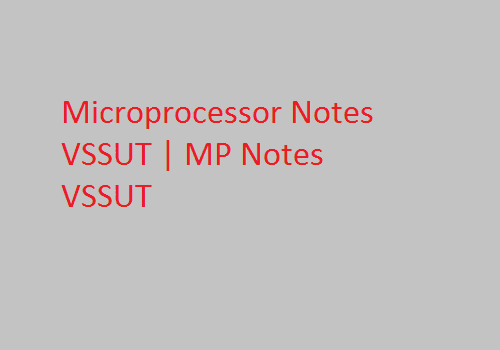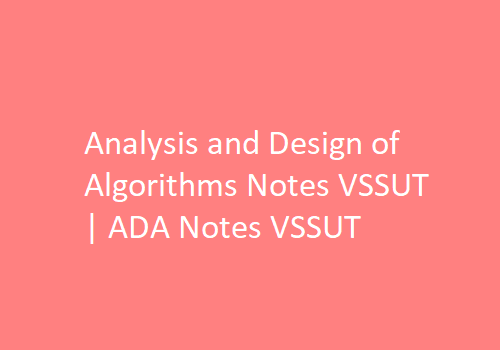Electronic Device and Circuits Notes pdf – EDC notes pdf file
Electronic Device and Circuits Notes pdf – EDC pdf notes – EDC notes pdf file to download are listed below please check it –
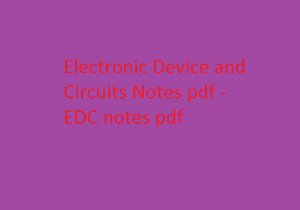
Note :- These notes are according to the R09 Syllabus book of JNTU. In R13 and R15,8-units of R09 syllabus are combined into 5-units in R13 and R15 syllabus. If you have any doubts please refer to the JNTU Syllabus Book.
Electronic Device and Circuits Notes PDF – EDC Notes
For students and professionals in electronics and electrical engineering, a solid grasp of electronic devices and circuits is crucial. To support this learning journey, Electronic Device and Circuits (EDC) notes provide comprehensive coverage of essential topics in the field. These notes follow the R09 syllabus of JNTU and are adjusted for R13 and R15 syllabi.
EDC Notes PDF Download Links
To make studying more convenient, here are the download links for each unit of the Electronic Device and Circuits notes:
These notes adhere to the R09 syllabus of JNTU. For R13 and R15 students, note that the 8 units of the R09 syllabus have been condensed into 5 units. For any syllabus-related queries, please consult the JNTU Syllabus Book.
Overview of EDC Notes PDF
The Electronic Device and Circuits notes provide an in-depth look at key concepts in electronic devices and circuits. Here’s a detailed overview of what each unit covers:
Unit 1: PN Junction Diodes and Rectifiers
- Structure and Operation: This unit introduces the basic structure and operation of various diodes, including PN junction diodes, Light Emitting Diodes (LEDs), Laser Diodes, and Zener Diodes. Understanding these components is fundamental to grasping their applications in electronic circuits.
- Characteristics: Learn about the electrical characteristics of these diodes, including forward and reverse bias behavior.
- Rectifiers: Explore the principles of half-wave and full-wave rectifiers, which are crucial for converting alternating current (AC) to direct current (DC). This section includes practical examples and circuit diagrams.
Unit 2: Transistors and Their Characteristics
- BJT, JFET, MOSFET, and IGBT: This unit covers the structure, operation, and characteristics of various types of transistors: Bipolar Junction Transistors (BJTs), Junction Field Effect Transistors (JFETs), Metal-Oxide-Semiconductor Field Effect Transistors (MOSFETs), and Insulated Gate Bipolar Transistors (IGBTs). Each transistor type has unique properties and applications.
- Controllable Switches: Learn how transistors function as controllable switches in electronic circuits, enabling precise control over electrical signals and power.
Unit 3: Amplifiers and Frequency Response
- Small Signal Models: Delve into the small signal models of common emitter (CE), common base (CB), and common collector (CC) amplifiers. Understanding these models is essential for analyzing amplifier performance.
- Gain and Frequency Response: Study the gain and frequency response of BJTs and MOSFETs. This section explains how amplifiers increase signal amplitude while maintaining frequency integrity.
- Applications: Examine the role of amplifiers in various communication systems, such as radio and television, where they are used to boost signal strength.
Unit 4: Multistage and Differential Amplifiers
- Operation and Gain: Learn about the operation and gain characteristics of multistage amplifiers, which combine multiple amplifier stages to achieve higher gain and better performance.
- Differential Amplifiers: Explore the design and function of differential amplifiers, which are used to amplify the difference between two input signals while rejecting common noise.
- Cascading Stages: Understand the need for cascading multiple amplifier stages to achieve desired amplification levels and impedance matching for specific applications.
Unit 5: Feedback Mechanisms and Oscillators
- Feedback Types: Study various feedback mechanisms, including shunt feedback, negative feedback, and positive feedback. Feedback plays a critical role in stabilizing and controlling amplifier performance.
- Oscillators: Learn about different types of oscillators, such as Wien bridge, Hartley, and crystal oscillators. These devices generate periodic signals used in a wide range of applications, from clocks to communication systems.
- Advantages of Feedback: Understand the benefits of negative feedback, including improved stability, enhanced frequency response, reduced noise, and increased linearity. Feedback can also improve the overall performance of amplifiers.
Benefits of FREE EDC Handwritten Notes PDF
Utilizing these handwritten notes offers several advantages:
- Comprehensive Content: The notes provide detailed explanations of complex electronic devices and circuits, helping students understand the subject matter thoroughly.
- Free Access: The availability of free downloadable notes ensures that students have access to high-quality study materials without incurring any costs.
- In-Depth Coverage: The notes cover a wide range of topics, from fundamental diode operations to advanced amplifier designs, offering a well-rounded education in electronic devices and circuits.
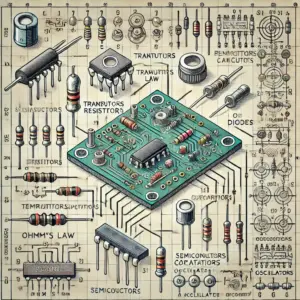
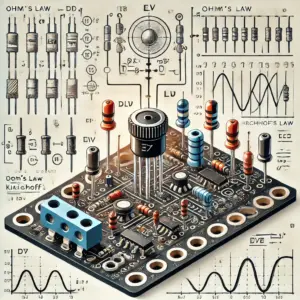
Conclusion
The Electronic Device and Circuits (EDC) Notes are an invaluable resource for anyone studying electronics and electrical engineering. These notes offer detailed insights into various electronic components, circuits, and their applications, making them essential for students looking to excel in their studies. By downloading and studying these notes, students can enhance their understanding of electronic devices and circuits and improve their academic performance.
FAQs
- Where can I download the Electronic Device and Circuits Notes PDF?
- You can download the notes from the provided links for each unit or the complete set.
- How to download the Electronic Device and Circuits Notes PDF?
- Click on the respective links for each unit or the complete notes to start the download process.
- How many modules are covered in the Electronic Device and Circuits Notes PDF?
- The notes cover five main units, each focusing on different aspects of electronic devices and circuits.
- What topics are covered in the Electronic Device and Circuits Notes PDF?
- Topics include PN junction diodes, transistors, small signal models, multistage amplifiers, feedback mechanisms, and oscillators.
- Where can I get the complete EDC Handwritten Notes PDF for free download?
- The complete handwritten notes PDF can be downloaded from the provided links.
- How to download EDC Handwritten Notes PDF?
- Use the download links for each unit or the complete set to obtain the handwritten notes in PDF format.
- How to Download FREE Electronic Device and Circuits Notes PDF?
- Access the notes through the provided links for each unit or the complete notes, and download them for free.

